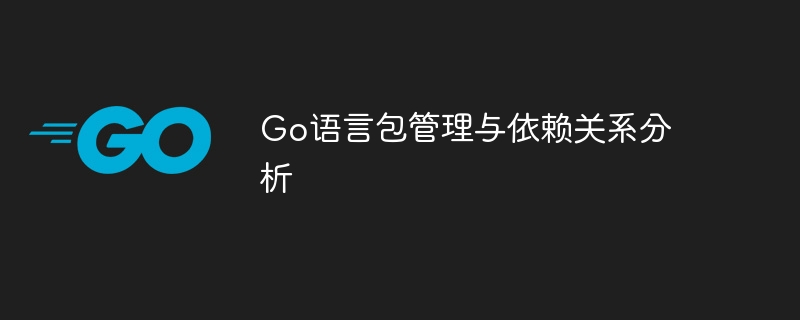Home >Backend Development >Golang >Go language package management and dependency analysis
Go language package management and dependency analysis
- WBOYWBOYWBOYWBOYWBOYWBOYWBOYWBOYWBOYWBOYWBOYWBOYWBOriginal
- 2024-04-03 15:48:011270browse
Go language package management best practices include using the go mod command to initialize, update, and lock dependencies. Dependency analysis can be done by using the go mod graph command to generate a dependency graph. The practical case demonstrates how to use the go get command to upgrade the dependency version, and then use the go mod tidy and go mod lock commands to update the go.mod file and lock the dependency. Following these best practices can improve code maintainability and stability of your Go projects.

Go language package management and dependency analysis
In the Go language, packages are the main way to organize and share code. Package management is critical to keeping code organized and maintainable in complex projects. This article will introduce the best practices of package management in Go language and provide a practical case to demonstrate dependency analysis.
Package management tool
The Go language provides the go mod command to manage packages and dependencies. The go mod command allows developers to initialize, update and lock project dependencies.
-
go mod init: Initialize a new
go.modfile, which contains the project’s module information and dependencies. -
go mod tidy: Obtain and update packages from the remote repository according to the dependencies specified in the
go.modfile. - go mod lock: Lock the dependency version of the project to ensure the reproducibility of the project.
Dependency Analysis
It is very important to understand and analyze the dependencies used in the project. Here's how to analyze dependencies using the go mod graph command:
go mod graph
This command will generate a dependency graph that shows the project and the version of each dependency:
root ├── github.com/go-chi/chi v1.5.4 │ ├── github.com/go-chi/cors v1.2.1 │ ├── github.com/go-chi/httpcache v1.2.4 │ ├── github.com/go-chi/middleware v1.4.3 │ ├── github.com/go-chi/render v1.4.2 │ └── github.com/rs/cors v1.7.0 └── gopkg.in/yaml.v3 v3.0.0
This picture shows the project using github.com/go-chi/chi package version 1.5.4, which package wiederum depends on github.com/go-chi/cors and other packages.
Practical case: dependency upgrade
Suppose we want to upgrade the github.com/rs/cors dependencies in the project to the latest version . We can use the go get command:
go get -u github.com/rs/cors/v3
This command will get and install the latest version of the dependencies. However, it does not update the dependency versions in the go.mod file.
To update dependency versions, we need to use the go mod tidy command:
go mod tidy
This command will scan the dependencies in the project and update go.mod The version in the file. To lock the updated dependencies, we can run the go mod lock command.
By following these best practices, you can effectively manage your Go project's packages and dependencies, thereby improving the maintainability and stability of your code.
The above is the detailed content of Go language package management and dependency analysis. For more information, please follow other related articles on the PHP Chinese website!

